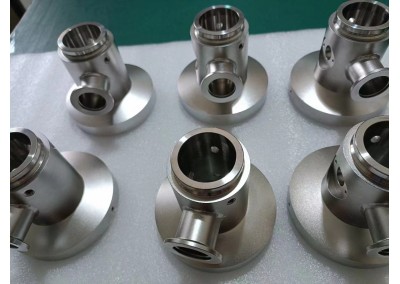Quick Link
Find Products
Contact us
Rison Prototype Co.,Ltd
-International Division
Tel: +86 180 3806 0406
Skype: rison.prototype
Mail: [email protected]
News
Home > News > How to get a prototype made in China?
How to get a prototype made in China?
When it comes to turning your groundbreaking idea into a tangible prototype, China's thriving manufacturing ecosystem offers an array of opportunities.
1. Before you dive into the intricate world of prototype manufacturing, ensure that your vision is crystal clear. Document your idea through meticulous sketches, detailed notes, and if possible, digital renderings. The more precise your concept, the smoother the journey ahead.
2. China boasts an extensive network of manufacturers, making it vital to identify the right partner. Online platforms like Alibaba, Global Sources, and Made-in-China are invaluable resources for scouting potential collaborators. Prioritize manufacturers experienced in your product category and evaluate their credibility through reviews, ratings, and past projects.
3. Effective communication forms the backbone of successful collaboration, especially when language and cultural barriers are present. Craft professional and concise emails, seeking to build a rapport with potential manufacturers. Employ translation tools if necessary, but strive for clarity and courtesy in all interactions.
4. Translate your concept into a meticulous blueprint with the help of skilled designers. Computer-Aided Design (CAD) software enables precision and provides a shared reference point for both you and the manufacturer. This step ensures that your prototype remains faithful to your vision while accommodating manufacturing constraints.
7. Before transitioning to full-scale production, conduct a comprehensive review of the refined prototype. Simulate the production process to identify potential bottlenecks, defects, or inefficiencies. Addressing these issues at this stage minimizes setbacks during the manufacturing phase.
8. With a refined prototype and streamlined production process, the stage is set for full-scale manufacturing. Maintain open lines of communication with the manufacturer, ensuring that the production timeline and quality benchmarks are consistently met.
9. Quality control is non-negotiable. Implement rigorous quality checks throughout the production process to identify defects or inconsistencies. Engage with the manufacturer to establish quality assurance protocols that align with your specifications.
10. As production nears completion, conduct a final inspection to guarantee that the prototypes meet your expectations. Evaluate their conformity to the original design, functionality, and finish. Any necessary adjustments should be made before unveiling your prototype to the world.
1. Before you dive into the intricate world of prototype manufacturing, ensure that your vision is crystal clear. Document your idea through meticulous sketches, detailed notes, and if possible, digital renderings. The more precise your concept, the smoother the journey ahead.
2. China boasts an extensive network of manufacturers, making it vital to identify the right partner. Online platforms like Alibaba, Global Sources, and Made-in-China are invaluable resources for scouting potential collaborators. Prioritize manufacturers experienced in your product category and evaluate their credibility through reviews, ratings, and past projects.
3. Effective communication forms the backbone of successful collaboration, especially when language and cultural barriers are present. Craft professional and concise emails, seeking to build a rapport with potential manufacturers. Employ translation tools if necessary, but strive for clarity and courtesy in all interactions.
4. Translate your concept into a meticulous blueprint with the help of skilled designers. Computer-Aided Design (CAD) software enables precision and provides a shared reference point for both you and the manufacturer. This step ensures that your prototype remains faithful to your vision while accommodating manufacturing constraints.
5. Materials play a pivotal role in prototype development. Collaborate closely with your chosen manufacturer to select materials that align with your design's specifications and intended functionality. Request material samples for thorough testing, ensuring that the chosen materials meet your quality standards.
7. Before transitioning to full-scale production, conduct a comprehensive review of the refined prototype. Simulate the production process to identify potential bottlenecks, defects, or inefficiencies. Addressing these issues at this stage minimizes setbacks during the manufacturing phase.
8. With a refined prototype and streamlined production process, the stage is set for full-scale manufacturing. Maintain open lines of communication with the manufacturer, ensuring that the production timeline and quality benchmarks are consistently met.
9. Quality control is non-negotiable. Implement rigorous quality checks throughout the production process to identify defects or inconsistencies. Engage with the manufacturer to establish quality assurance protocols that align with your specifications.
10. As production nears completion, conduct a final inspection to guarantee that the prototypes meet your expectations. Evaluate their conformity to the original design, functionality, and finish. Any necessary adjustments should be made before unveiling your prototype to the world.




